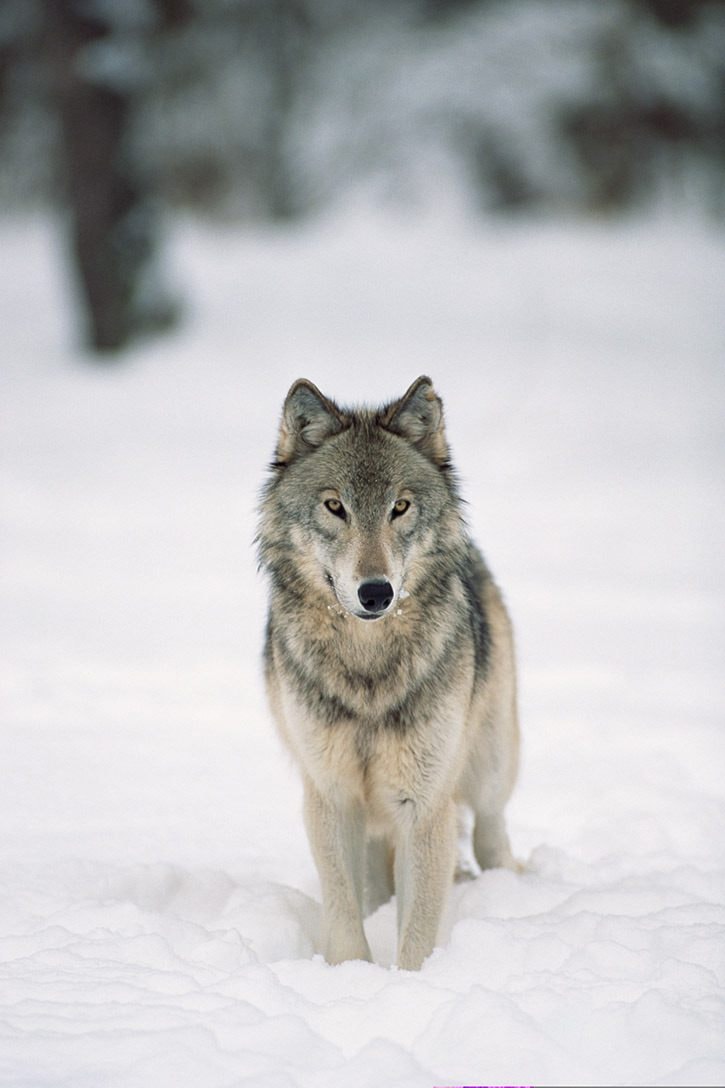Predation by wolves continues to be the biggest cause of cattle losses in the Cariboo-Chilcotin, according to Kevin Boon, general manager of the B.C. Cattlemen’s Association which represents about 1,150 producers throughout the province.
“In that area it is our leading cause of death and cost to our producers,” Boon said during an interview for Cattle Country.
In some cases ranchers are seeing a 10 to 15 per cent loss of their calf crop to wolf predation in a year, Boon noted, adding he knows ranchers in the Big Creek area that have lost close to $50,000 due to cattle loss. Theirs are not big operations and would be in the 200 head range, he added.
He described the existing compensation program available for ranchers as a drop in the bucket.
“In order for us to get compensation we have to verify a kill and and the type of predator that did the kill,” Boon explained, noting often it’s difficult to find remains, because of the large areas of land the cattle are using.
“If a pack of wolves kill a calf it’s gone overnight,” he said. “They pretty well eat everything and scatter the bones so it’s hard to confirm what we suspect it is.”
Boon estimated that less than five per cent of kills are actually verified.
Dealing with predation is a top priority for the association and one of the most difficult things to obtain constructive results from.
Back in 2003, the association started a program where it hired contractors to remove the offending wolf or pack after a kill was verified.
When the funding ran out five years later, they started another program that “mirrored” the first one, but funding again dried up in 2011.
“At that point the government turned it over to the Conservation Officer Service to look after, removing some of these wolves or predators, because we do have issues with bears and cougars as well,” Boon said.
The government implemented a predator control co-ordinator for the province. “It’s been run by one of your local conservation officers Darryl Ashworth for the last few years and he’s done an exemplary job. One of the things he’s done is be a liaison between the ranching community and the CO services,” Boon said. “He created predator conflict committees to discuss issues in specific areas and ways to approach the problems.”
The committees also co-ordinate training for ranchers on how to trap and how to verify a kill.
“He’s trained over 600 ranchers to be able to do the verification process themselves and it’s worked very well,” Boon added of Ashworth’s efforts, saying both sides have benefited because the COS is strapped for resources as are ranchers.
The association has also encouraged trappers to remove more wolves, gaining some limited success.
“It’s not necessarily targeting the wolves, but it is targeting areas where there are high populations,” he said of the trapping program. “It has helped, but at the end of the day the amount of wolves being removed is far less than what the birth rates are.”
Wolves continue to expand their territories and with the effects of the mountain pine beetle opening up more areas for harvesting of timber, wolves have the ability to travel farther and quicker.
Ranchers aren’t out there to kill all the wolves, but want to bring a balance back and are hoping the government’s Grey Wolf Management Plan can be put in place in the region.
“In the programs we run we’re very targeted so if the wolves aren’t bothering us we leave them alone because for the most part if they aren’t killing our cattle they are keeping the wolves that would out because they are very territorial,” Boon said.
